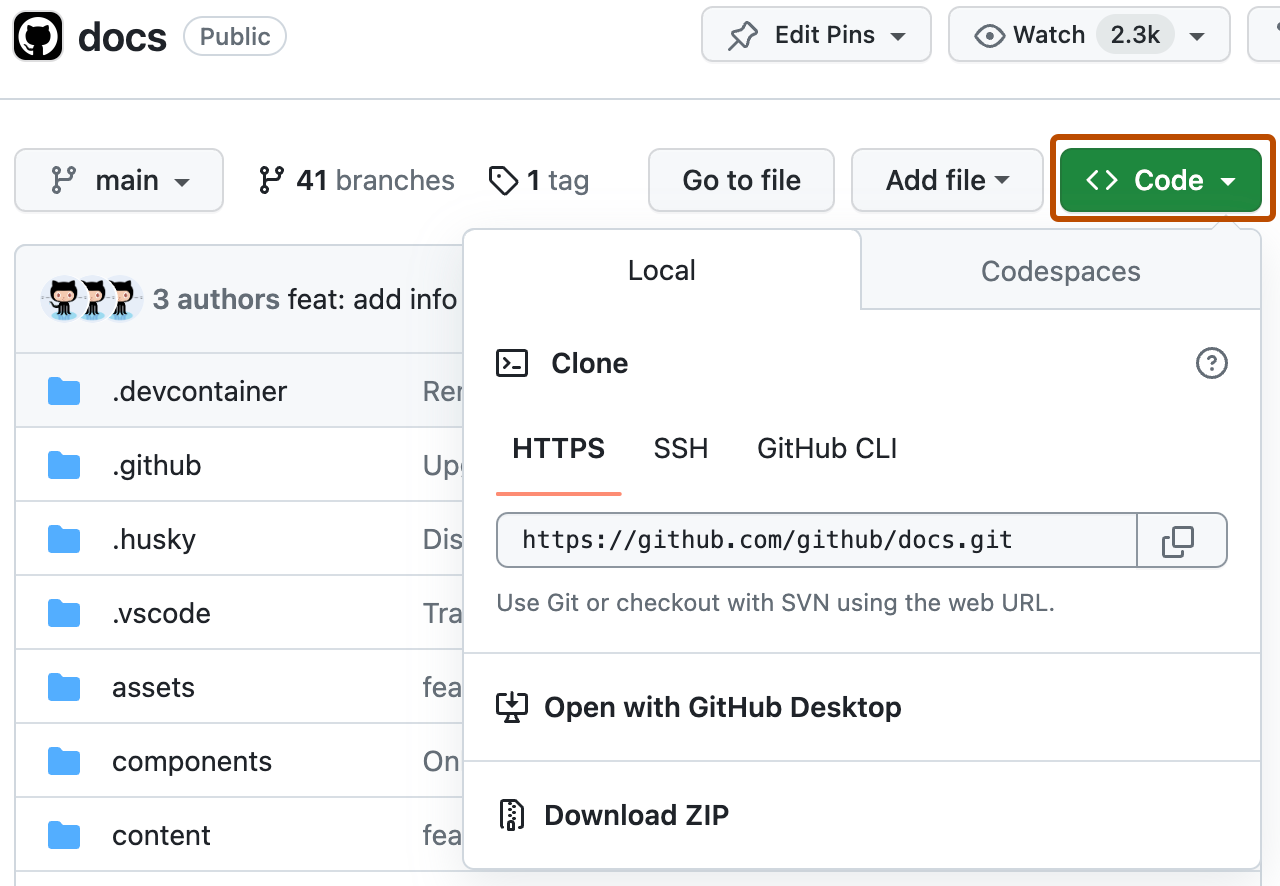Options for getting changes
These commands are very useful when interacting with a remote repository. clone and fetch download remote code from a repository's remote URL to your local computer, merge is used to merge different people's work together with yours, and pull is a combination of fetch and merge.
Cloning a repository
To grab a complete copy of another user's repository, use git clone like this:
$ git clone https://github.com/USERNAME/REPOSITORY.git
# Clones a repository to your computer
You can choose from several different URLs when cloning a repository. While logged in to GitHub, these URLs are available on the main page of the repository when you click Code.

When you run git clone, the following actions occur:
- A new folder called
repois made - It is initialized as a Git repository
- A remote named
originis created, pointing to the URL you cloned from - All of the repository's files and commits are downloaded there
- The default branch is checked out
For every branch foo in the remote repository, a corresponding remote-tracking branch
refs/remotes/origin/foo is created in your local repository. You can usually abbreviate
such remote-tracking branch names to origin/foo.
Fetching changes from a remote repository
Use git fetch to retrieve new work done by other people. Fetching from a repository grabs all the new remote-tracking branches and tags without merging those changes into your own branches.
If you already have a local repository with a remote URL set up for the desired project, you can grab all the new information by using git fetch *remotename* in the terminal:
$ git fetch REMOTE-NAME
# Fetches updates made to a remote repository
Otherwise, you can always add a new remote and then fetch. For more information, see Managing remote repositories.
Merging changes into your local branch
Merging combines your local changes with changes made by others.
Typically, you'd merge a remote-tracking branch (i.e., a branch fetched from a remote repository) with your local branch:
$ git merge REMOTE-NAME/BRANCH-NAME
# Merges updates made online with your local work
Pulling changes from a remote repository
git pull is a convenient shortcut for completing both git fetch and git mergein the same command:
$ git pull REMOTE-NAME BRANCH-NAME
# Grabs online updates and merges them with your local work
Because pull performs a merge on the retrieved changes, you should ensure that
your local work is committed before running the pull command. If you run into
a merge conflict
you cannot resolve, or if you decide to quit the merge, you can use git merge --abort
to take the branch back to where it was in before you pulled.